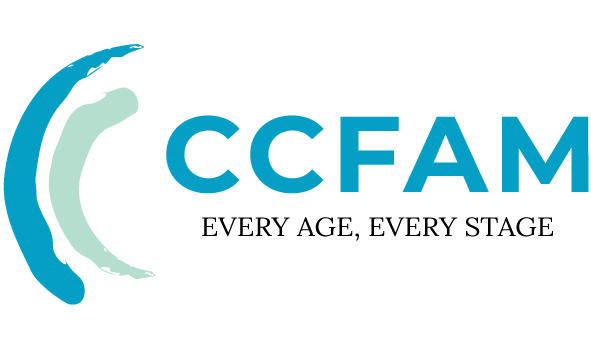31 May The Benefits of Filial Play Therapy for Families
Filial play therapy (FPT) is a parent-mediated intervention that uses attachment-based, therapeutic play to strengthen family relationships. Rather than relying on traditional talk therapy, this research-supported approach trains parents to use structured play skills grounded in child development and attachment theory. With therapist guidance, caregivers learn practical tools for attunement, co-regulation, and limit setting that can reshape day-to-day interactions. For an overview of how play therapy supports development, see the American Psychological Association’s CE Corner on play therapy here.
How Does Filial Play Therapy Differ From Standard Parenting Approaches?
Originally developed by Dr. Bernard Guerney at Pennsylvania State University, filial therapy integrates Rogerian (person-centered) principles with play-based methods to create a parent-as-therapist model. Where conventional parenting often leans on instruction and behavior management, FPT emphasizes connection and emotional understanding through:
- Non-directive play protocols: Parents learn core skills such as tracking, reflective responding, and concise limit setting.
- Emotional scaffolding: Support is tailored to the child’s needs within Vygotsky’s zone of proximal development (ZPD overview).
- Developmentally informed limits: Boundaries are taught using approaches like Landreth’s ACT model (Acknowledge the feeling, Communicate the limit, Target an alternative) and an understanding of behavior patterns informed by the DSM-5 (DSM-5).
What Are the Evidence-Based Benefits of Filial Therapy?
Research reported in peer‑reviewed journals suggests that caregiver-led play interventions can improve attachment, emotional regulation, and family functioning. Examples include:
1. Enhanced Attachment Security
Studies using the Strange Situation paradigm have found higher rates of secure attachment among families participating in parent–child play therapy, likely due to increased caregiver sensitivity and attunement (Strange Situation overview). Parents build these skills through:
- Training in recognizing and reflecting micro-expressions and cues
- Co-regulation exercises inspired by emotion coaching methods (see an introduction from the Gottman Institute here)
2. Trauma-Responsive Support
Caregiver-mediated interventions are central to healing after adversity. In filial therapy studies, families have reported reductions in trauma-related symptoms and gains in emotional literacy. For context on adverse childhood experiences (ACEs) and why caregiver involvement matters, see the National Child Traumatic Stress Network’s overview here. Related outcomes are often measured with tools like the BASC‑3 (Behavior Assessment System for Children).
Which Filial Therapy Techniques Yield Optimal Outcomes?
Guidance from professional organizations such as the Association for Play Therapy underscores the value of consistent, child-led practice with caregiver coaching (APT evidence-based practice statement).
1. Child-Led Play Sessions
Parents implement a structured, child-led format based on Guerney’s principles:
- Prepare a simple, predictable play space with a curated set of expressive toys.
- Begin with non-interfering observation to follow the child’s lead.
- Use tracking and emotion mirroring to reflect content and feeling in the play.
- Close with a brief reflection; set clear, calm limits only when necessary and offer acceptable alternatives.
2. Reflective Listening Drills
Adapted from Carl Rogers’ person-centered approach, parents practice concise reflections that convey understanding:
- Content reflection (“You’re making the doll say…”) to track the child’s narrative
- Affect reflection (“That feels really frustrating”) to validate emotional experience
Simple visual tools like “feeling faces” can support emotion identification for younger children (examples from Vanderbilt’s CSEFEL resources are available here).
How Does Filial Therapy Address Modern Parenting Challenges?
In the context of today’s family life—documented in Pew Research Center’s report, Parenting in America Today (2023)—FPT offers practical, relationship-focused solutions.
| Challenge | FPT Solution |
|---|---|
| Screen time overload | Regular unplugged play sessions rebuild attention, empathy, and connection |
| Behavioral power struggles | Calm, consistent limit-setting frameworks reduce escalation and reinforce boundaries |
| Emotional dysregulation | Co-regulation routines and reflective responding help children name, tolerate, and manage big feelings |
Conclusion: The Future of Attachment-Based Interventions
As a collaborative, attachment-based approach, filial play therapy equips parents with actionable skills that can prevent problems and enhance resilience. Many clinicians now offer secure telehealth adaptations consistent with APA’s telepsychology guidance (see guidelines), making FPT more accessible for today’s families.
FAQs: Evidence-Based Answers
1. How does filial therapy compare to PCIT for ADHD?
Both FPT and Parent–Child Interaction Therapy (PCIT) are effective, caregiver-focused models. PCIT’s structured coaching often produces rapid behavior change, while filial approaches are frequently chosen to deepen emotional regulation and attachment. The best fit depends on your goals and your child’s needs; learn more about PCIT here.
2. What credentials should a filial therapist hold?
Look for a licensed clinician (e.g., LPC, LMFT, LCSW, Psychologist) with specialized training in filial methods. The Association for Play Therapy’s Registered Play Therapist credential indicates advanced play therapy competence (APT). Many providers also complete Child‑Parent Relationship Therapy (a filial model) training through programs such as the University of North Texas Center for Play Therapy (training information).
References
- American Psychological Association. CE Corner: Play therapy—A clinical tool for children. APA
- Association for Play Therapy. Evidence-Based Practice Statement. AFPT
- National Child Traumatic Stress Network. Adverse Childhood Experiences (ACEs). NCTSN
- Pew Research Center. Parenting in America Today (2023). PWC
- American Psychiatric Association. Diagnostic and Statistical Manual of Mental Disorders (DSM-5). psychiatry.org



Sorry, the comment form is closed at this time.